When a streamer simply isn’t enough.
- Big, bright, and responsive touchscreen
- Full Android 10 with Play Store access
- Class-leading connectivity
- Clear, bright, powerful sound
- Compact, high-quality, elegant enclosure
- No included remote control
- No Airplay output ability
- Clean signature may sound sterile to some listeners
I’m an Apple guy with multiple computers, phones, and tablets – plus the obligatory Apple TV and Music subscriptions. Heck, my brother-in-law works at the Cupertino campus spaceship.
Needless to say, an Android-based device is out of my comfort zone.
Well, consider me won over to the Android way of life. The Fiio R7 runs a full version of Android, and since it supports the Play Store, it can do just about anything a phone or tablet can. Yet, it’s so much more than just a streamer – it’s also a tablet, DAC, and headphone amplifier in one box.
Is this the rise of a new category? I think so. Behold… the Desktop DAP.
Looking like a smartphone embedded into a shrunken desktop PC, the R7 is a visual standout. It’s truly a do-it-all device and is all you need on your desk to listen to high-quality audio – just add headphones. Or it can serve as the source for external DACs, amps, or even monitors.
Priced north of USD$500, the R7 presents a compelling value argument when you tally up the cost of all the individual pieces it can replace. Particularly when you add in the convenience and ease of use factors.
The R7 has supplanted an old Macbook Air as the heart of my headphone listening station, and I think it can supersede what you’ve got on your desk as well. Let’s find out why.
One Minute Review Video
Design and Build
The R7 takes a big step in abandoning the traditional audio component size and shape – it’s clearly not meant to be stacked as part of a stereo setup. It’s got a front-and-center, this-is-all-you-need design.
The portrait-oriented ~5” LCD touchscreen displays in 720×1280 resolution and is flanked on the right by a push button volume/power knob, output selector knob, and 6.35mm, 4.4mm, and 4-pin XLR headphone outputs. Under the screen are the traditional three Android navigation capacitive touch buttons.
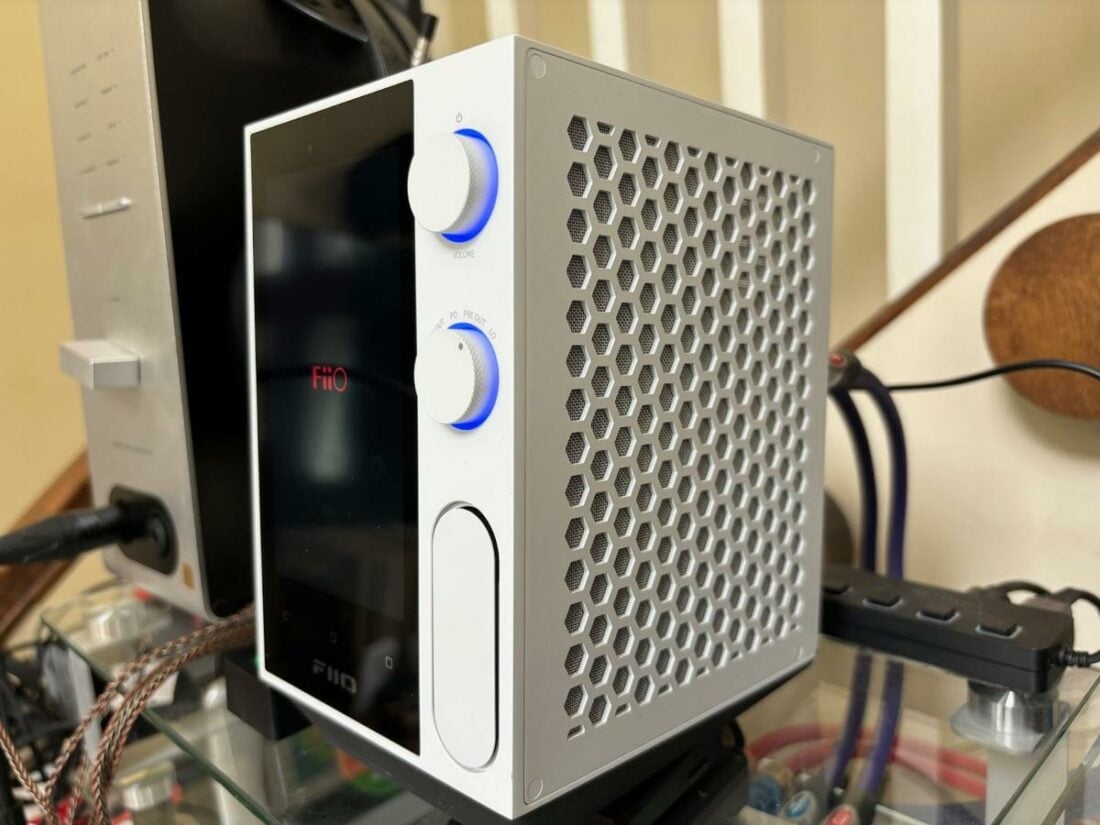
The aluminum case (available in either white or black) has mesh-backed, honeycomb-shaped vents on either side. The back panel is absolutely stuffed with inputs and outputs, including:
- 2x RCA analog outputs
- XLR output
- USB-c and USB-a ports
- Optical and coaxial inputs
- Optical and coaxial outputs
- SD card slot
- RJ45 LAN port
- DC power input (DC power supply not included)
- AC/DC power selector switch
- AC IEC power connection (selectable between 220/110V)
- Power switch
The only obvious omission keeping the R7 from being a single all-encompassing device is the lack of an analog input. I would prefer one of the RCA outputs to have input functionality.
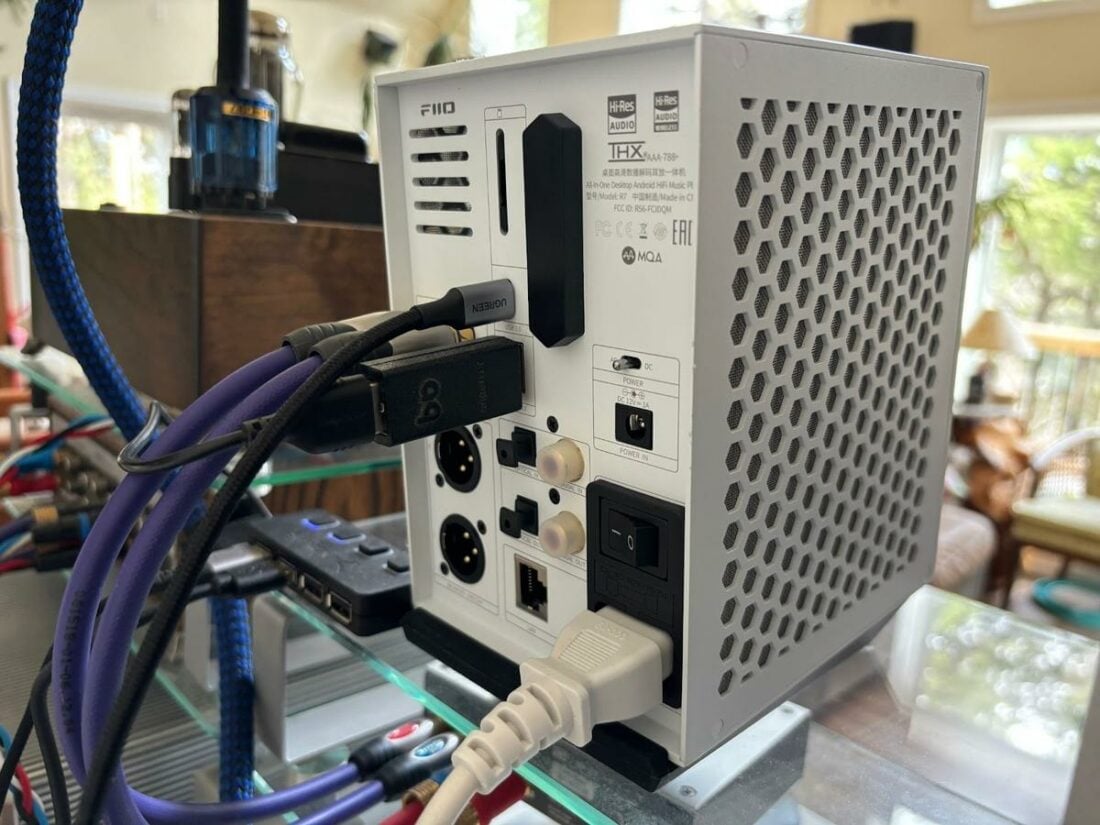
Controls
The top front knob turns the device on with a push (with the main power switched on in the back). After approximately 20 seconds, the screen loads and is ready for app selection. Pressing the knob again displays a menu where you can turn it off or restart.
By default, the LEDs surrounding the knob change color depending on the track format being played.
Rotating the second knob changes between outputs:
- PO PRE OUT – front headphone + rear pre outputs
- PO – front headphone outputs
- PRE OUT – rear volume adjustable outputs
- LO – rear fixed line-level outputs – the screen displays a warning regarding high volume level
Beyond the two knobs, all other navigation is done Android smartphone-style using the touchscreen and three buttons below. Most features are customizable and selected via apps.
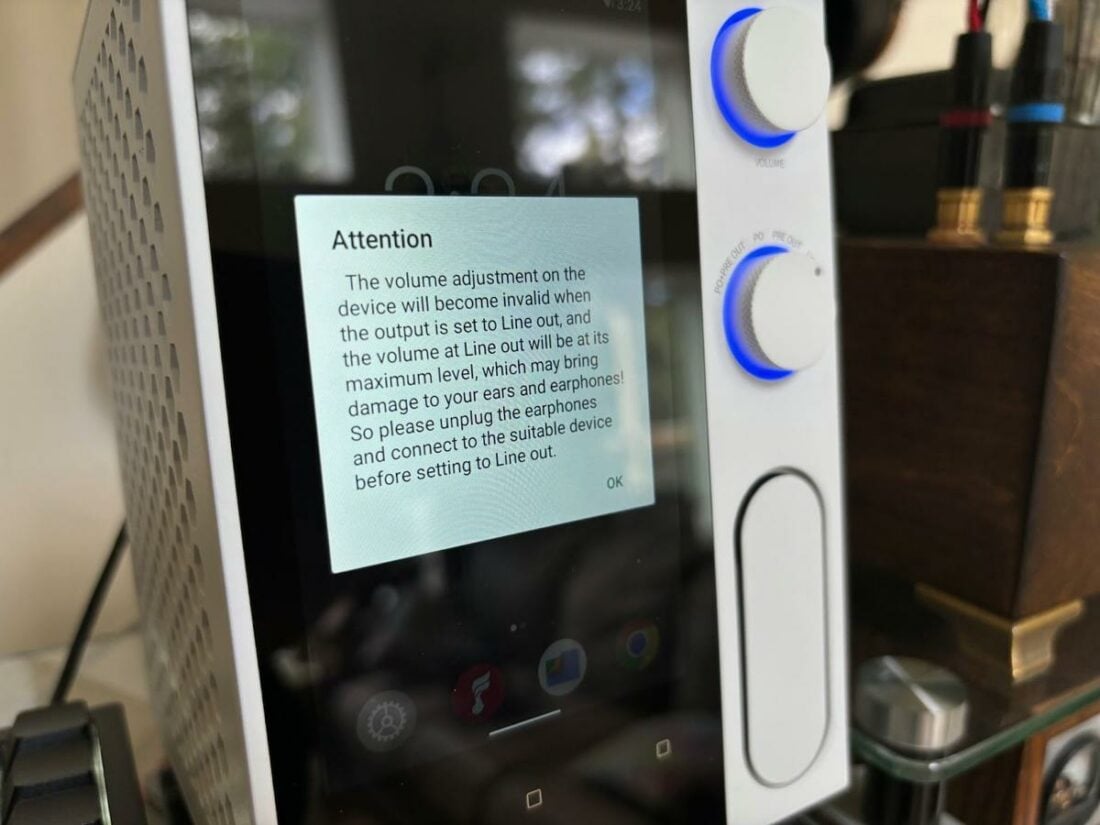
Default modes:
- Pure Music Mode
- USB DAC Mode
- Coax In Mode
- Optical In Mode
- Roon Ready
- AirPlay
- BT Receiving Mode
You can use the top drag-down menu to customize WiFi, Bluetooth, Gain (5 levels), Roon, DSD, Dark and Night modes, Screen, File access, and Sharing.
Additionally, SPDIF type (DoP or D2P), digital filters, Bluetooth codec (SBC, AAC, aptX, aptX-HD, LDAC), balance, harmonic distortion, and ‘all to DSD’ can be adjusted.
Please note that the above only begins to outline the functionality of the R7, as every app has its own options and capabilities.
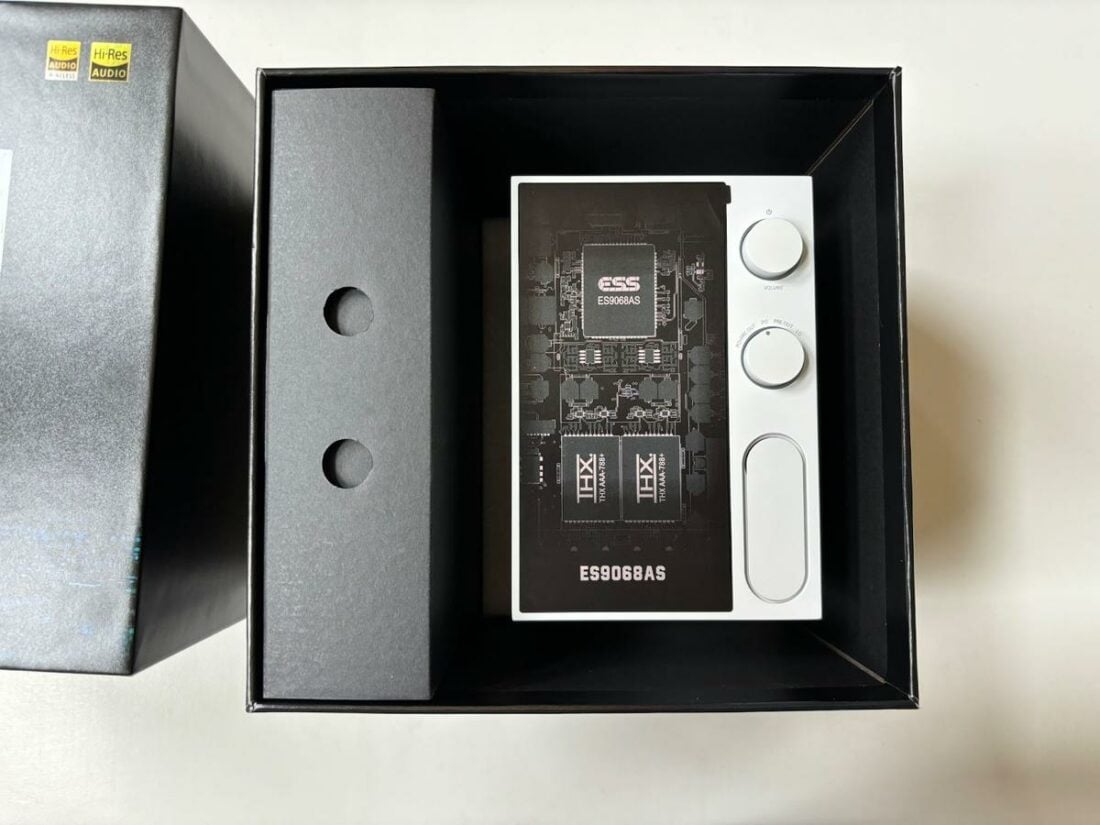
Under the Hood
The R7 is powered by a Snapdragon 660 processor with 4Gb of RAM and 64Gb of internal storage. It feels snappy and fast and is more than sufficient to power Android 10. Interestingly, Fiio chose version 10 rather than the current Android 11 used on some other DAPs.
DAC duties are handled by an ESS ES9068AS chip, which supports 32bit, 384kHz PCM, DSD256, and MQA.
The amplifier uses dual THX AAA 788+ chipsets, well known for clean, high-power output (in this case, over 3W balanced, 1.2W SE @32ohms).
Also inside the case is a 30W AC switching power supply and a user-selectable separate 12V DC power circuit intended as an optional upgrade with the purchase of a FiiO PL50 linear power supply.
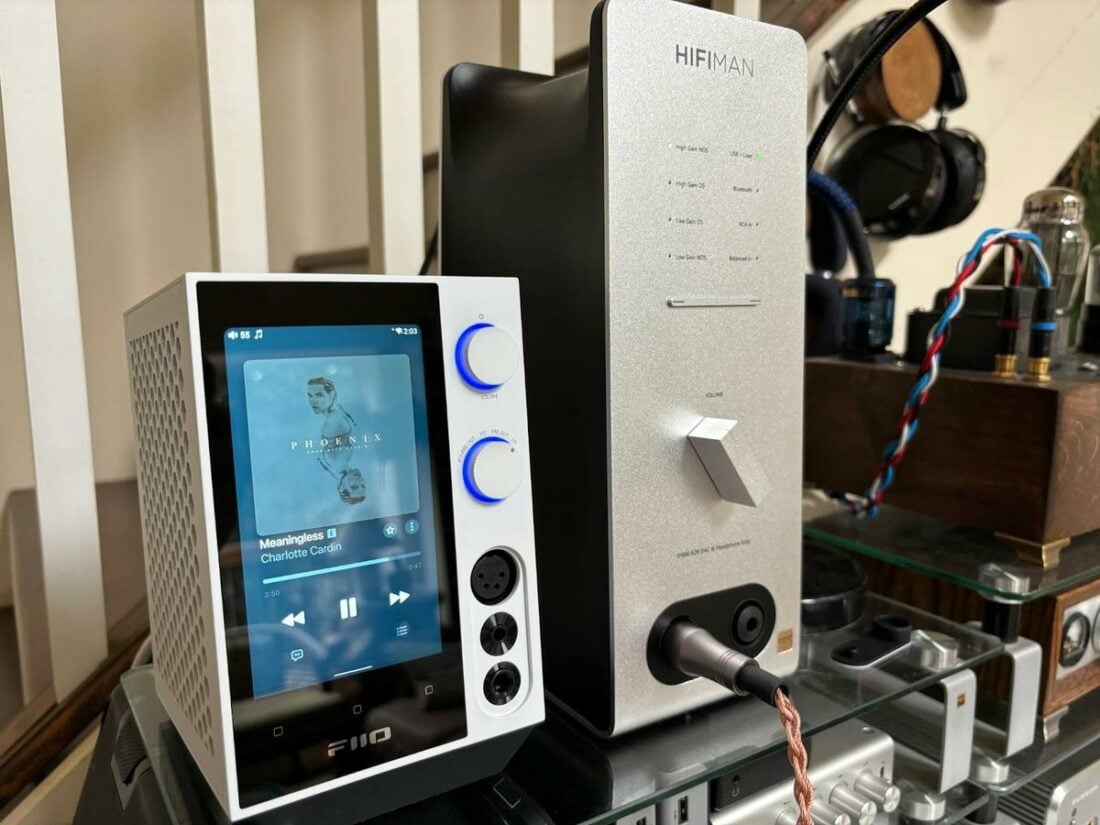
How Does the R7 Sound?
I evaluated the R7 as an all-in-one device, but that’s not how I’m going to use it in the future.
I’ll be using the R7 as a do-it-all source for my standalone DAC/amps and tube amplifiers.
I expect that most other folks who have less headphone gear on hand will be entirely delighted with the DAC and amplifier performance of the R7.
The high-end ESS chip inside the R7 can decode most high-resolution files and deliver well-defined audio. Fed to the dual THX amplifiers, the overall experience is remarkably clean, crisp, and clear. Detail and resolution are excellent, while dynamics seem full, fast, and dramatic.
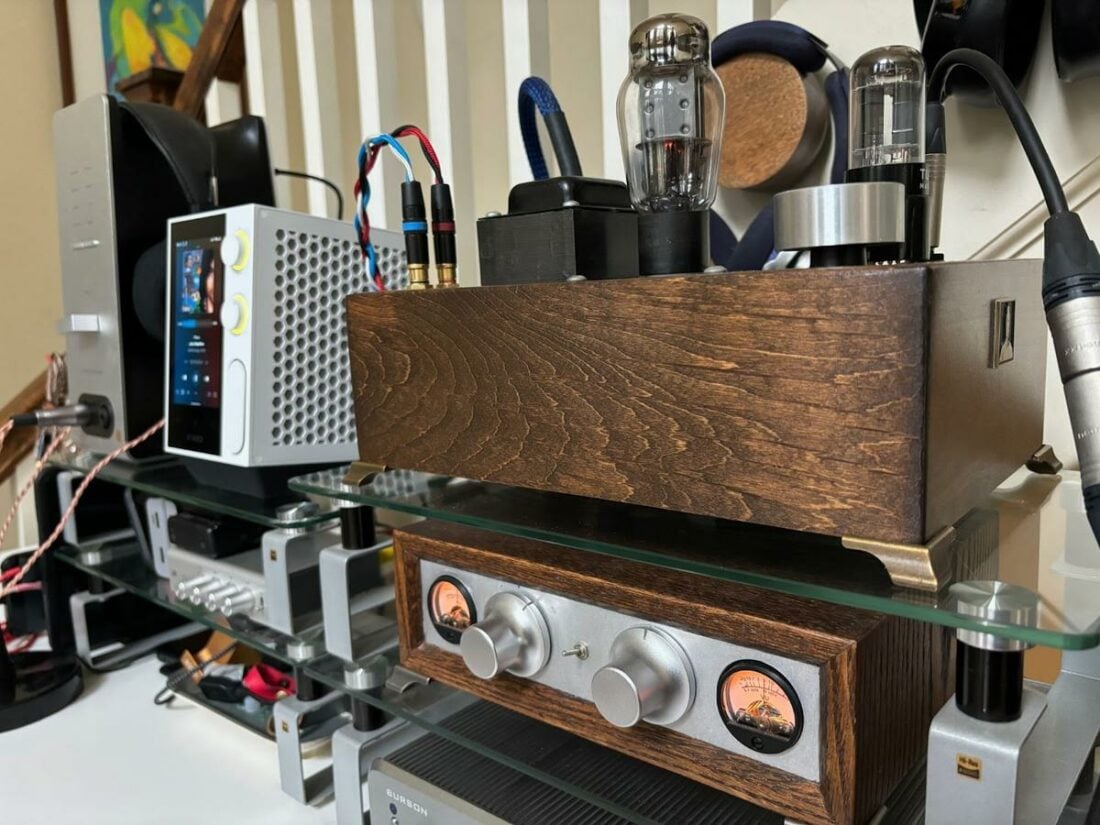
There’s plenty of power on hand to drive essentially any pair of headphones or IEMs, and the five levels of gain ensure you can dial that power back to usable levels with highly efficient cans. As I’ve come to expect with THX amplification, even with sensitive IEMs, the background remains silent.
The R7 manages to avoid the sterile and thin presentation I’ve encountered with some less expensive models featuring THX chipsets.
Heard through the transparent Audeze LCD-5, the R7’s sound is linear and spotless. However, it doesn’t quite have that warmer, more intimate feel of good class-A amplification (which is my personal preference). I suggest pairing the R7 with slightly less revealing or warmer-sounding headphones to bring out their best.
The DAC output from both the RCA and balanced XLR analog outputs works great and appears uncolored and neutral. I encountered no glare or harshness that some attribute to ESS DACs.
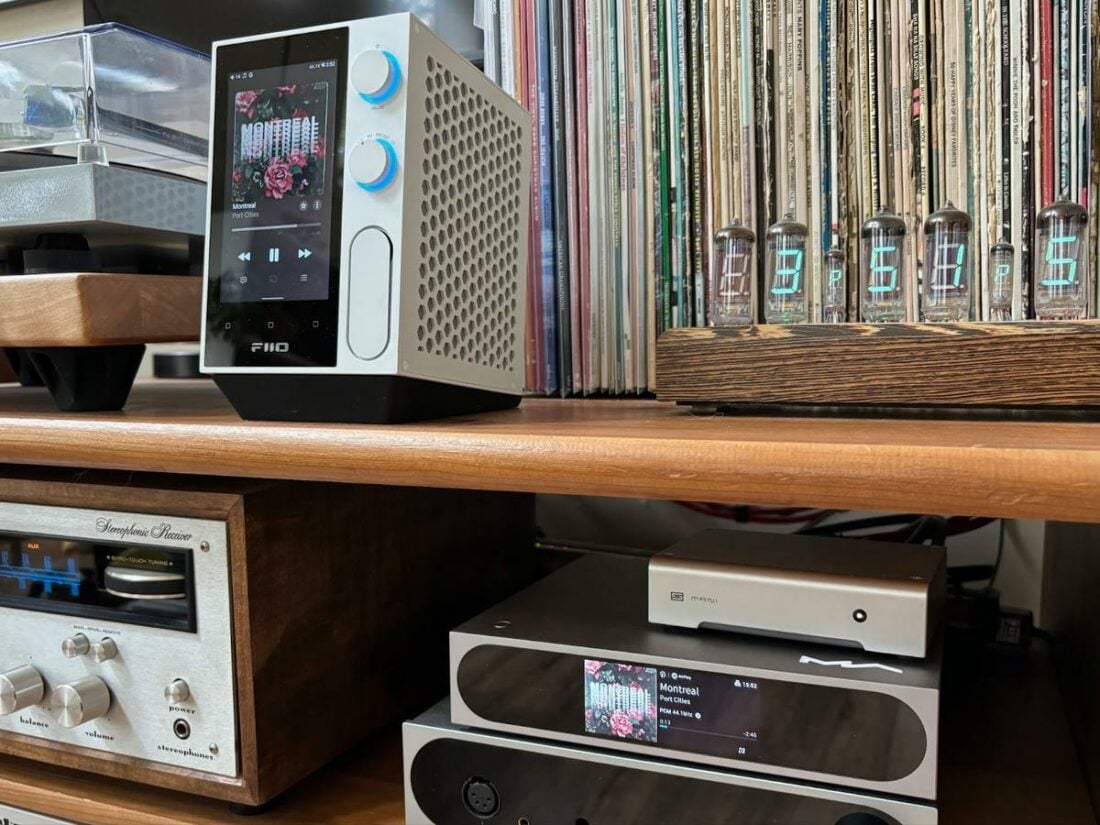
Comparisons
My daily use streamer is the Matrix Audio Mini-i 4. Unfortunately, I don’t have the Pro version to compare to the R7, as the Pro includes an internal headphone amplifier. So, ultimately, this comparison is a bit of apples and oranges, as the R7 does so much more than the Mini-I 4, even though they cost nearly the same.
The Mini-i 4 has a similar set of inputs and outputs on the back panel, including LAN, USB-c, optical and coaxial inputs, and RCA and XLR outputs. It bests the R7 with the inclusion of an RCA analog input (which I use for a phono preamp) and an HDMI ARC input (which I don’t use).
Here is where things start to diverge.
The Mini-i 4 does not have a digital output nor Bluetooth or WiFi support. The Mini-i 4 is a streamer only, so while it can support Airplay, TIDAL Connect, Spotify Connect, and Roon Ready input, it is dependent on a source device (such as a computer, phone, or tablet) with the associated application.
The Mini-i 4’s capacitive touch and physical top button don’t hold a candle to the pleasant-to-use knobs and touchscreen on the R7. Speaking of screens, the R7’s screen far larger and, as a result, much easier to see from a distance.
The local library navigation can’t even be compared, as the user experience in using an application like Plexamp is lightyears ahead of what the Matrix Audio app can manage.
The Mini-i 4 streamer will remain in my full-sized stereo as a way to add digital audio playback from my phone, while the R7 will anchor my headphone system.
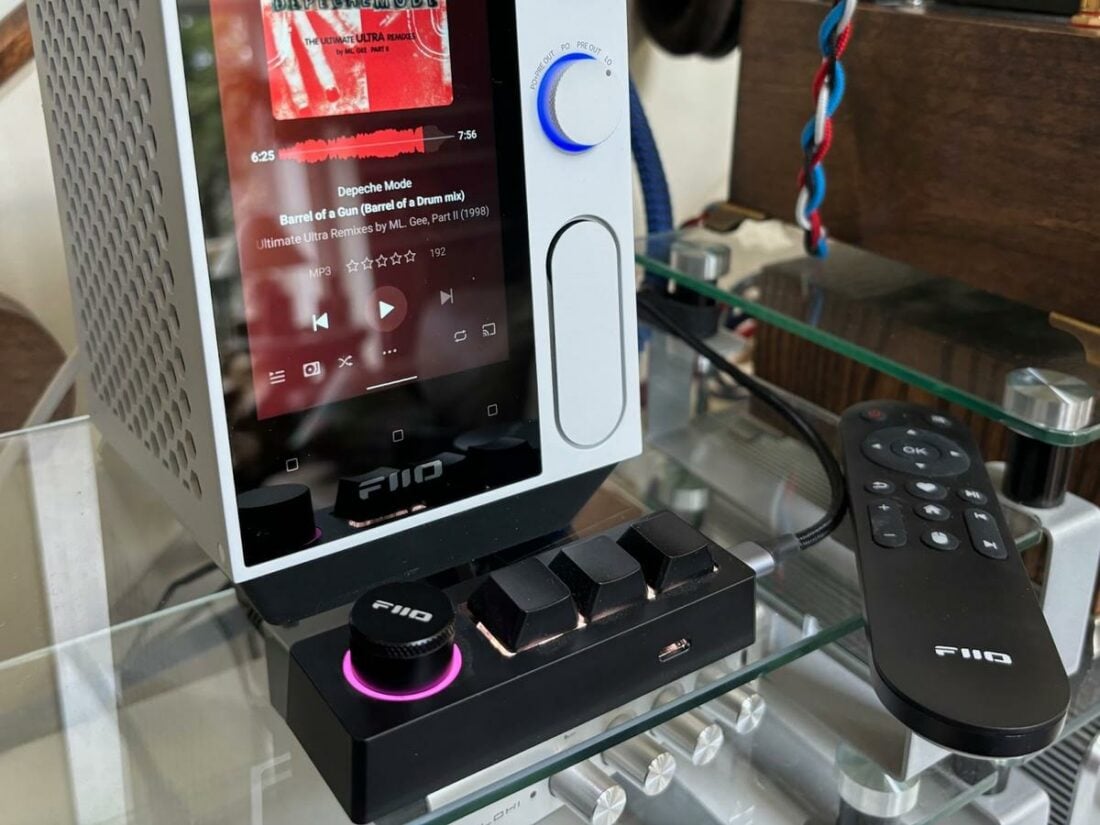
Where to Buy
Who Should Buy This?
The FiiO R7 offers the neatest headphone listening experience that I’ve ever encountered. Barring the power cord and headphone cable (which you could forgo and listen via Bluetooth), you need nothing else on your desk. Leave your phone in your pocket and concentrate on the music without distraction.
Final Thoughts
When I recently went to visit a city about 4 hours away, I packed up the R7 and dropped it at an audiophile friend’s house upon arrival. I told him, “This is the thing that everyone will want.”
That’s high praise – and I stand behind it.
Want to simplify your headphone or full-sized stereo digital audio setup? The R7 is the answer. It can be one-and-done for headphones or can be the digital audio source for external DACs and amps.
The sheer customizability and flexibility of an Android-based system, which is married to almost every input and output you can imagine, is impossible to overvalue. It’s a streamer, DAC, headphone amp, and a DAP wrapped up neatly in one little box.
The headphone audio output is transparent and powerful. It’s not quite the tonality that I love from powerful desktop class A amplification, but it’s clean and full.
It’s hard to nit-pick any real concerns. I would prefer a remote to be included, but one can be had easily enough. A line-level input and Airplay output would be appreciated, but I’m sure there are just as many users who would never use those features as would want them.
Add up the cost of a small Android tablet, a balanced DAC/amp with an ESS chipset and THX amplifier modules, plus a Roon, Tidal, and Spotify-ready streamer (not to mention the cables to connect them all), and you’ll soon reach a sum far higher than the asking price of the R7.
It’s a heck of a deal, and I’m not even counting the simplicity, elegance, and space benefits of housing them all in a single integrated device. With this much bang for the buck, I’m beginning to ask why anyone would want anything else.
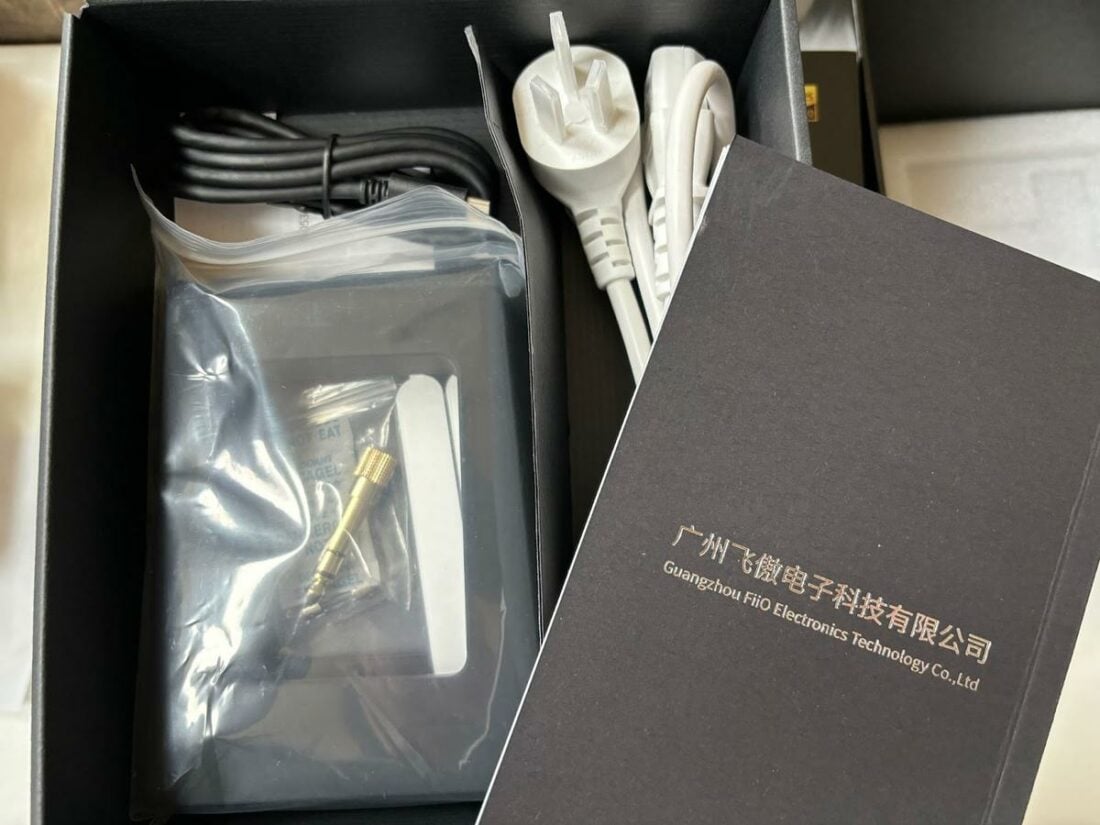
What’s in the Box?
- FiiO R7
- USB-c Cable
- 6.3mm to 3.5mm adapter
- Micro SD card holder
- 2 silicone bases (flat and angled)
- 4 adhesive strips
- Dust plug
- AC power cable
- AC fuse
- Start guide
Technical Specifications
- Form: DAC, Amp, Streamer, DAP
- DAC Chipset: ESS ES9068AS
- Amplifier: 2x THX AAA-788+
- Audio Format Support: 384kHz/32bit, DSD: 64/128/256, WMA: 96kHz/24bit, DTS: 192kHz/24bit, MQA:Full Decoder
- Output Power: Balanced: L+R≥3650mW+3650mW (32Ω,THD+N<1%), SE: L+R≥1250mW+1250mW (32Ω,THD+N<1%)
- Output Impedance (Ohm): <0.5 Ohm balanced, <0.4 Ohm SE
- SNR (dB): 124 dB
- Headphone Outputs: 6.35mm, 4.4mm, 4-pin XLR
- Bluetooth Version: 5.0
- Bluetooth Audio Codec: AAC/SBC/aptX/aptX HD/LDAC/LHDC
- Weight (g): 1282g
- Dimensions: 160mmx110mmx134mm
